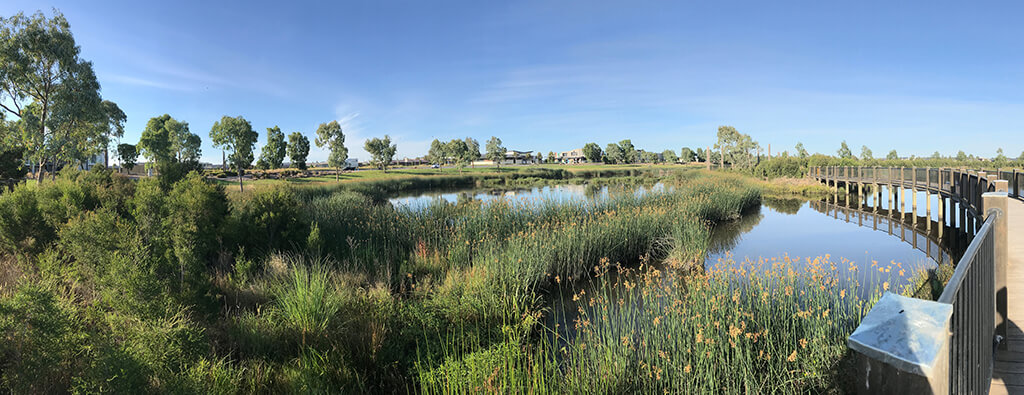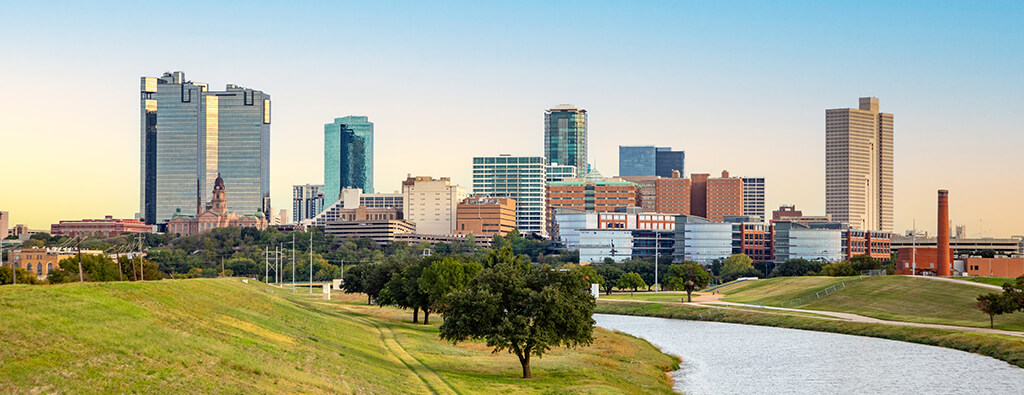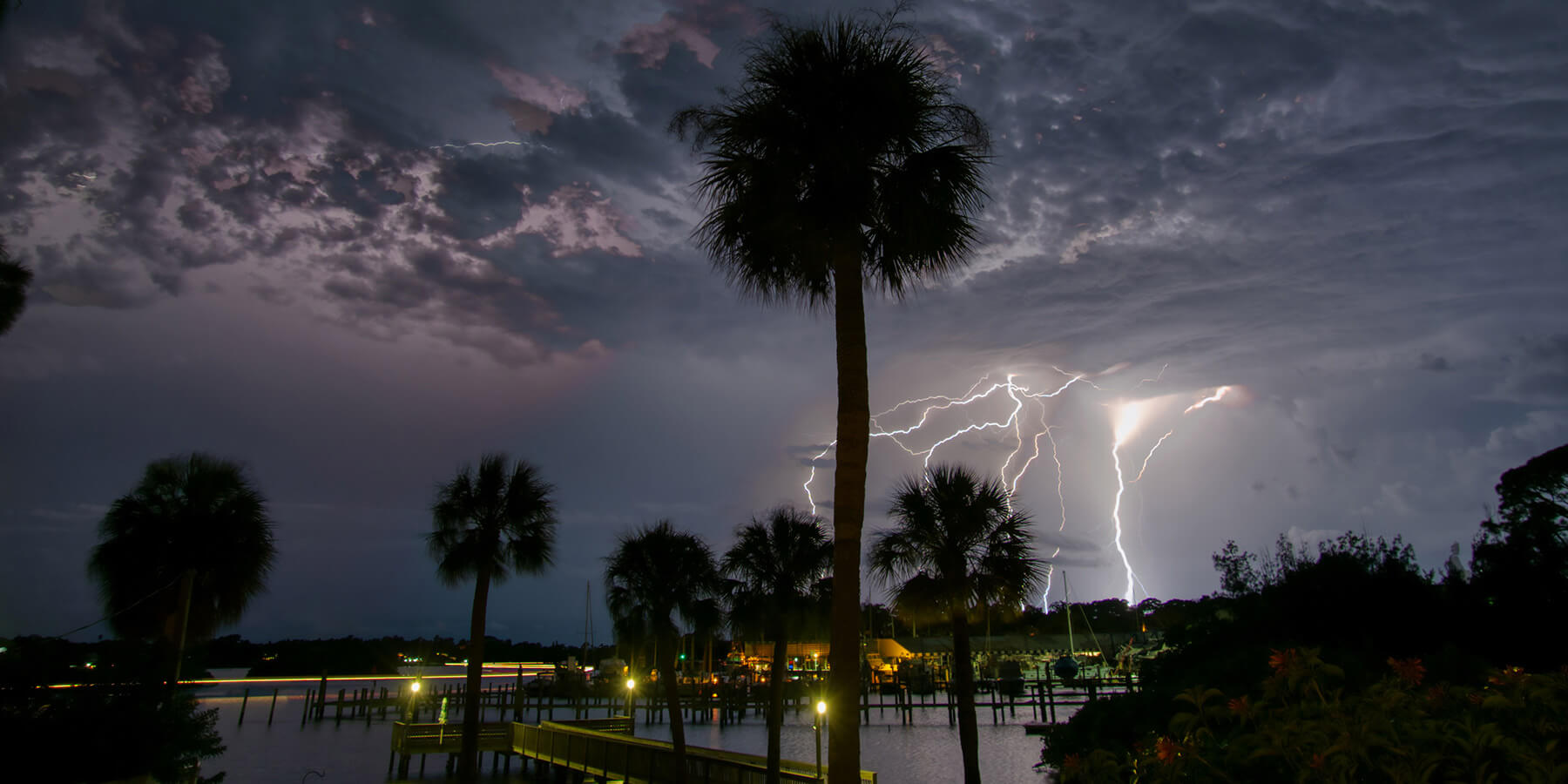Nature-based solutions (NbS) are innovative approaches that harness the power of natural ecosystems to work on sustainable, long-term benefits for communities, economies, and the environment.
These include reducing carbon emissions, building resilience to extreme weather, improving water security through wetland restoration, boosting food production with sustainable farming, protecting biodiversity, and promoting public health with greener urban spaces.
We explore the broader applications of NbS, highlighting practical U.S.-based examples, insights on sustainable practices, resilience strategies, and expertise in grant management and funding opportunities.
Understanding Nature-Based Solutions
Nature-based solutions (NbS) involve leveraging natural processes to address urban flooding, biodiversity loss, and ecosystem degradation.
They often provide cost-effective alternatives to traditional engineered infrastructure while delivering co-benefits like improved air quality and community well-being.
NbS can range from small-scale urban green projects to large-scale ecosystem restorations, making them adaptable to a variety of contexts.
Benefits of NbS
- Ecosystem Restoration: Leverages natural ecosystems to address societal challenges like stormwater management and biodiversity conservation.
- Multi-Functional and Sustainable: Offers long-term solutions that tackle multiple issues, such as climate adaptation and recreational needs.
- Community and Well-Being: Improves quality of life through green spaces, reduced noise, and mental health benefits, while supporting social cohesion.
- Cost-Effective: Provides a lower-cost alternative to traditional infrastructure with reduced maintenance.
- Biodiversity Support: Restores habitats to protect diverse species, such as pollinators critical for agriculture and ecosystem resilience.
Practical Examples of Nature-Based Solutions
Wetland Restoration to Mitigate Flooding
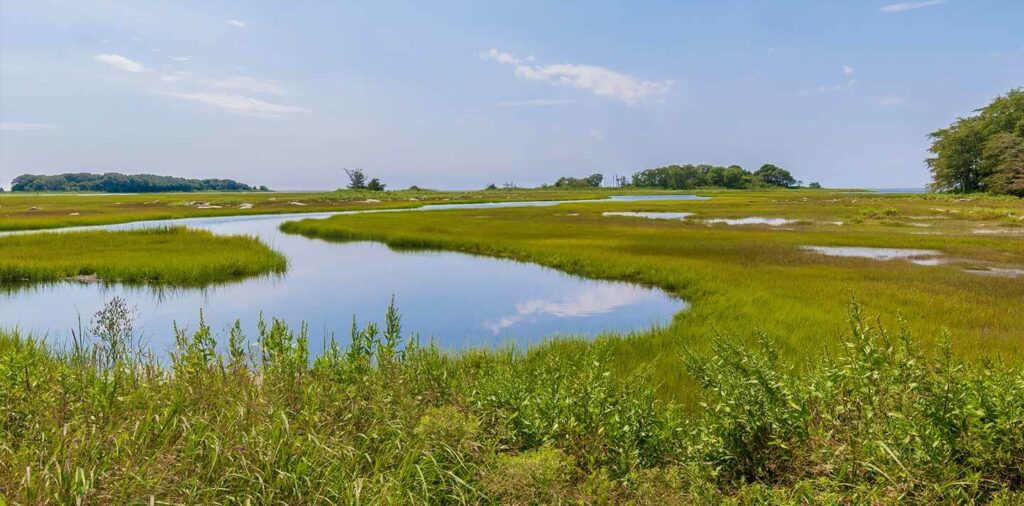
Wetlands play a vital role as natural sponges, absorbing excess water during heavy rains and significantly reducing flood risks for nearby communities. In the Mississippi River Basin, restored wetlands have been shown to decrease flood peaks.
This natural flood mitigation is especially critical in areas prone to severe weather events, where wetlands reduce the strain on man-made infrastructure like levees and reservoirs.
Beyond flood control, wetlands contribute to water quality improvement by filtering sediments, nutrients, and pollutants before they reach downstream water bodies.
According to studies from the USDA Agricultural Research Service, wetlands are particularly effective in capturing nitrates from agricultural runoff, which helps reduce the likelihood of hypoxic zones, such as the “Dead Zone” in the Gulf Coast.
These restoration projects also bolster biodiversity by creating habitats for diverse wildlife, including threatened and endangered species. Wetlands serve as breeding grounds and migration stops for birds, fish, and amphibians, fostering ecological balance.
Restoring and conserving wetlands protects infrastructure and reduces economic losses while ensuring the health of ecosystems that sustain both human and natural communities.
Bayou Greenways in Houston, Texas
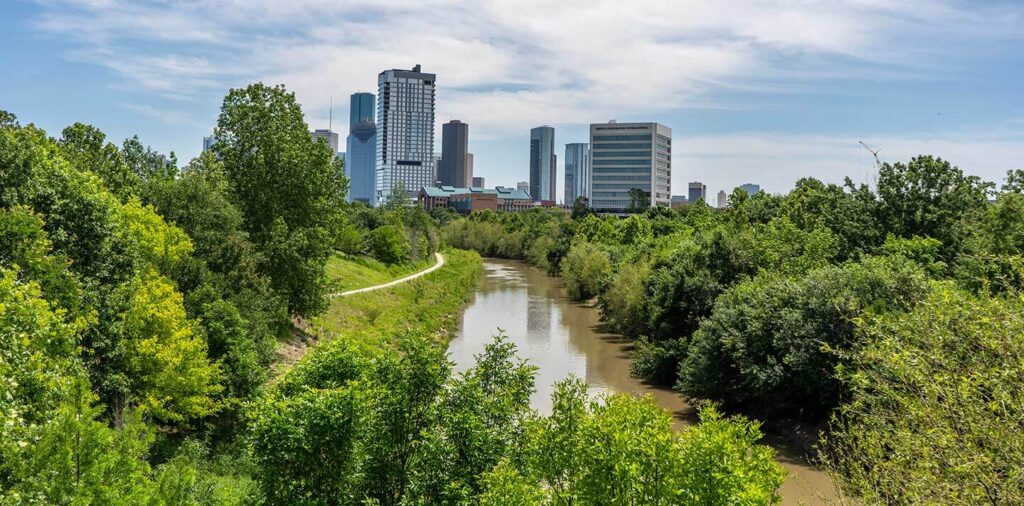
The Bayou Greenways project in Houston transformed 3,000 acres of unused land into 150 miles of connected parks and trails across nine bayous, improving flood management, water quality, and environmental resilience.
Led by the Houston Parks Board and supported by $50 million from the Kinder Foundation, the $220 million initiative benefits 1.5 million residents by providing equitable access to green spaces, promoting healthier lifestyles, and strengthening communities.
As one of the largest urban conservation efforts in the U.S., it set a new standard for sustainable urban park systems.
Urban Green Roofs for Cooling and Stormwater Management
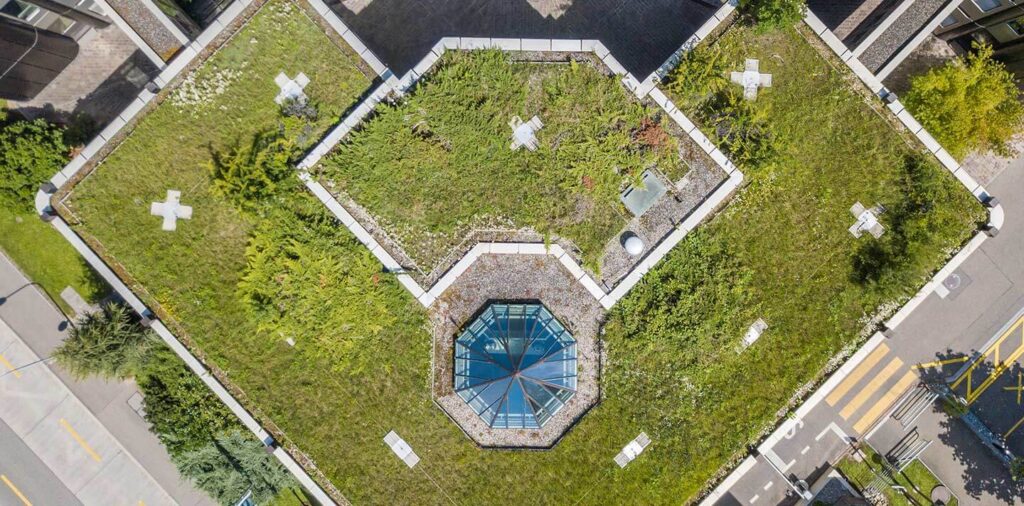
Green roofs play a crucial role in combating urban heat and managing stormwater in cities. A green roof is a roof covered with vegetation and soil.
By absorbing rainfall, they help reduce the amount of runoff that enters sewer systems, preventing overflows during storms.
In Chicago, over 500 green roofs have been implemented, covering approximately 5.5 million square feet of rooftop space.
These innovative rooftops significantly reduce the urban heat island effect by lowering surrounding air temperatures and decreasing heat buildup in densely populated areas.
Green roofs also enhance energy efficiency in buildings by providing natural insulation. This reduces the need for air conditioning in the summer, leading to lower cooling costs and overall energy savings.
Beyond these functional benefits, green roofs also improve air quality by filtering pollutants, promote biodiversity by creating habitats for plants and wildlife, and offer aesthetic and recreational value to urban spaces.
Oyster Reef Restoration for Water Quality
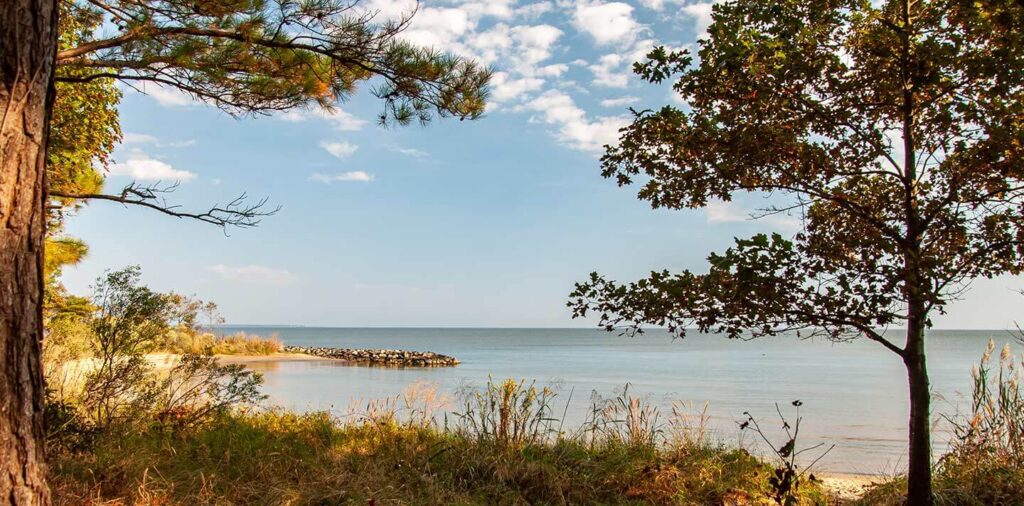
Oyster reefs are vital to the health and resilience of the Chesapeake Bay ecosystem. They serve as natural water filters, with a single adult oyster capable of filtering up to 50 gallons of water daily, improving water quality and providing essential habitats for marine life.
Reefs also act as natural breakwaters, helping to reduce shoreline erosion and protect coastal communities from storm surges and rising sea levels.
NOAA and its partners have made significant progress in oyster reef restoration across the Chesapeake Bay, aiming to restore oyster populations in 10 tributaries by the end of 2025.
These efforts have led to large, restored reefs that improve the Bay’s health, support biodiversity, and strengthen the region’s resilience to environmental changes.
Living shoreline projects incorporating oyster reefs have proven effective in preventing erosion and safeguarding properties, playing a key role in supporting environmental and community resilience and contributing to a healthier Chesapeake Bay.
Nashville’s Green Infrastructure Plan
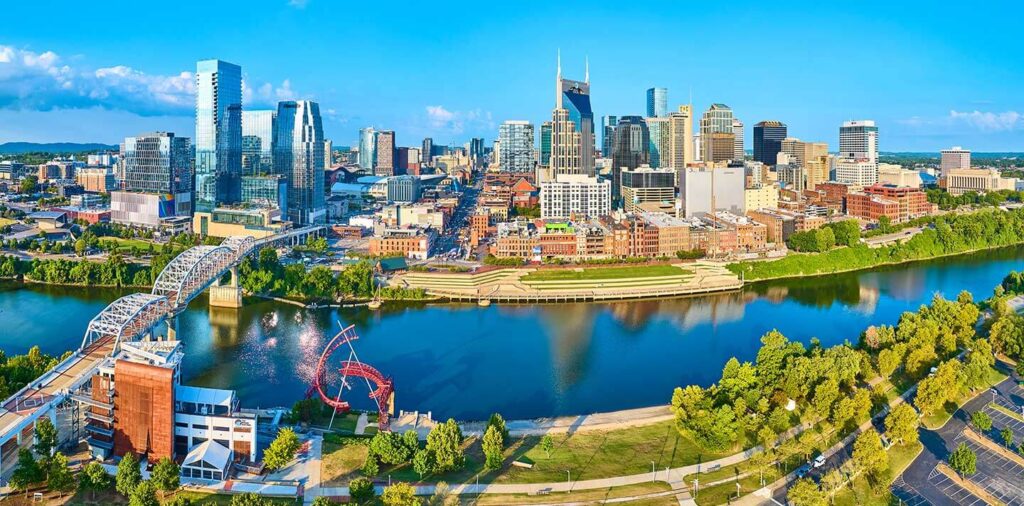
Nashville has embraced green infrastructure as a key strategy to address urban flooding and improve water quality in local streams. These efforts include implementing bioswales, green roofs, and other NbS to manage stormwater more effectively.
A notable example is the Riverfront Park project, which features bioswales and green streets to capture and filter stormwater, reducing flood risks and minimizing the burden on traditional drainage systems.
The city has also worked to restore riparian buffers and promote tree planting to further enhance water quality and reduce runoff.
These green projects mitigate flooding and create vibrant, sustainable public spaces that benefit the community and the environment.
Nashville’s approach demonstrates how innovative, natural solutions can play a critical role in urban resilience and sustainability.
Implementing Nature-Based Solutions
Implementing nature-based solutions (NbS) requires specialized knowledge in ecological design, engineering, and urban planning. Disaster recovery consultants provide this expertise, helping communities develop practical, sustainable strategies tailored to their unique needs.
A consultant can work with you to analyze risks, design mitigation plans, and incorporate solutions like wetlands restoration or green infrastructure to address vulnerabilities.
Their role ensures that projects balance immediate disaster mitigation with long-term resilience.
These experts ensure projects comply with regulatory requirements while maximizing available funding, strengthening the impact of NbS initiatives and enhancing community adaptability and future environmental health.
Disaster Mitigation and NbS
Integrating disaster mitigation into funding strategies for NbS demands a strategic approach focused on minimizing disaster impacts while advancing sustainable growth.
Investments in structural elements like green infrastructure and non-structural initiatives like community preparedness are cost-efficient ways to boost resilience. Proactive planning ensures that resources are used effectively to build safer, stronger communities.
Funding and Resources
Effective grant management is vital to supporting NbS initiatives by simplifying the funding process and ensuring compliance with regulatory standards.
Advanced tools and frameworks streamline fund administration, reducing risks of mismanagement and aligning financial strategies with long-term goals.
This helps NbS projects stay well-supported and achieve their objectives efficiently.
Integrating NbS with Disaster Mitigation and Grant Management
Disaster mitigation and grant management work together to build stronger, more adaptive communities. By linking mitigation strategies with precise fund oversight, organizations can address immediate risks and long-term vulnerabilities.
Grant management frameworks secure the necessary funding and ensure resources are allocated to projects with the highest impact.
This alignment enables communities to better prepare for disasters, reduce recovery times, and invest in sustainable initiatives that protect critical infrastructure and support economic growth.
When combined, these efforts create a foundation for greater resilience, balancing present needs with future challenges.
Public Awareness and Engagement
Public understanding and buy-in are also important to the success of NbS. Educational campaigns that highlight the co-benefits of these projects can help garner public support.
Involving residents in the planning and maintenance of NbS creates a sense of ownership, improving the sustainability of the initiatives.
These tornadoes primarily occurred in the right-front quadrant of the storm, an area known for enhanced tornado activity.
Nature-Based Solutions and Climate Change
While nature-based solutions (NbS) significantly contribute to climate change mitigation and adaptation, their benefits extend far beyond this scope.
Below are some examples of their role in addressing climate-related challenges:
Mitigating Greenhouse Gas Emissions
Forests and Mangroves
Forests in the United States absorb approximately 16% of the nation’s annual carbon dioxide emissions. This sequestration is equivalent to the emissions from about 50 million vehicles.
Mangroves, in particular, are highly effective at capturing and storing carbon in their dense root systems and surrounding sediments. They can often store up to four times more carbon than terrestrial forests.
Soil Management
Practices like cover cropping can significantly enhance soil carbon sequestration. Studies indicate that such practices, when combined with conservation tillage, can sequester approximately 600 pounds of carbon per acre annually.
Healthy soil also supports biodiversity and improves water retention, making it a dual benefit for both carbon mitigation and agricultural sustainability.
Peatlands Storage
Peatlands, which cover just 3% of the Earth’s surface, store roughly twice as much carbon as all the world’s forests combined.
Protecting these vital ecosystems from degradation and restoring damaged peatlands can prevent the release of substantial amounts of greenhouse gases, safeguarding communities from the increasing frequency of extreme weather events.
Broader Applications of Nature-Based Solutions
Nature-based solutions (NbS), such as windbreaks and natural pest control systems, help reduce the reliance on synthetic inputs in agriculture.
For example, the USDA’s Conservation Reserve Program focuses on conserving environmentally sensitive land by removing it from agricultural production and planting species that improve environmental health.
This program has restored millions of acres of grasslands, enhancing soil health, protecting water quality, and providing wildlife habitat, all while boosting agricultural productivity.
As of 2024, the program has enrolled nearly 26 million acres, offering annual rental payments and cost-share assistance to participants.
It also supports initiatives like riparian buffers, wetlands restoration, and pollinator habitats, further contributing to sustainable farming practices and ecological balance.
The Future of Nature-Based Solutions
The adoption of nature-based solutions (NbS) is gaining momentum, supported by government programs and private initiatives.
Federal investments highlight the growing recognition of NbS as a critical tool for resilience and sustainability.
Organizations must consider NbS as part of their strategy to address urban planning challenges, improve community well-being, and promote responsible care for the environment.
By prioritizing these solutions, communities can achieve long-term benefits for both people and ecosystems.
Contact us for more insights on sustainable practices, resilience strategies, and expertise in grant management and funding opportunities.
